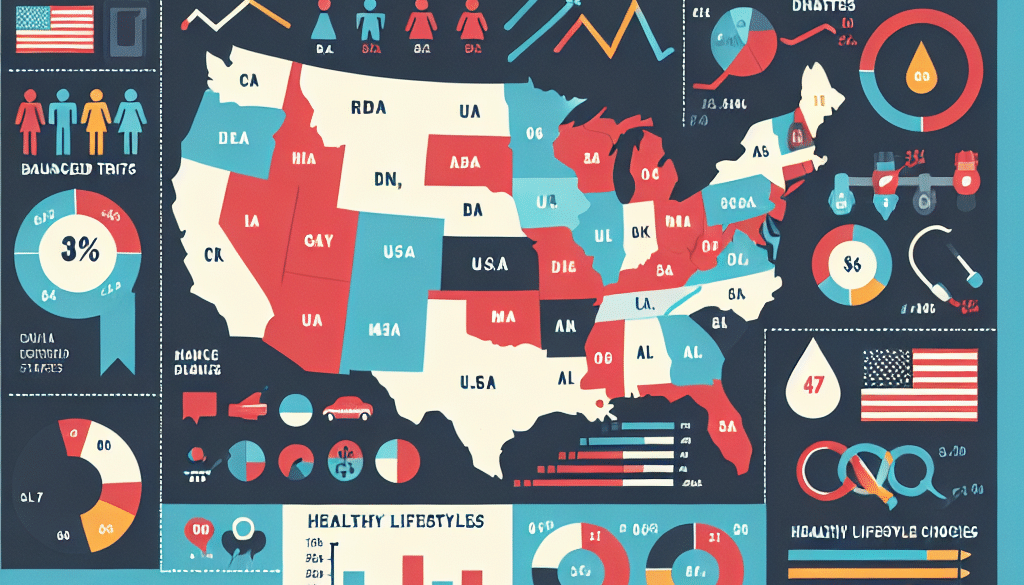A Snapshot of Diabetes in the United States
-
Table of Contents
- Diabetes in the United States: A Comprehensive Overview
- The Current State of Diabetes in America
- Demographics and Risk Factors
- Economic Impact of Diabetes
- Management and Treatment
- Prevention Efforts
- Case Studies and Success Stories
- Conclusion: Key Takeaways
- Enhance Your Health with ETprotein’s Protein Products
Diabetes in the United States: A Comprehensive Overview

Diabetes is a chronic health condition that affects millions of Americans, posing significant public health challenges and creating a substantial burden on the healthcare system. This article provides a detailed snapshot of diabetes in the United States, exploring its prevalence, economic impact, and the ongoing efforts to manage and prevent this pervasive disease.
The Current State of Diabetes in America
Diabetes is one of the most prevalent chronic diseases in the United States. According to the Centers for Disease Control and Prevention (CDC), over 34 million Americans—just over 1 in 10—have diabetes, and approximately 88 million—nearly 1 in 3—have prediabetes.
- Type 1 Diabetes: An autoimmune condition where the body does not produce insulin.
- Type 2 Diabetes: A metabolic disorder where the body cannot use insulin effectively.
- Gestational Diabetes: A form of diabetes that occurs during pregnancy.
Type 2 diabetes accounts for up to 95% of all diagnosed cases and is often associated with obesity, physical inactivity, and poor diet.
Demographics and Risk Factors
Diabetes prevalence varies across different demographics and is influenced by factors such as age, ethnicity, and socioeconomic status. For instance, American Indians/Alaska Natives have the highest age-adjusted prevalence of diagnosed diabetes among all U.S. racial and ethnic groups.
- Age: The risk of diabetes increases with age, particularly after 45 years.
- Ethnicity: African Americans, Hispanic/Latino Americans, American Indians, and Pacific Islanders are at higher risk.
- Socioeconomic Status: Lower income and education levels are linked to higher diabetes prevalence.
Economic Impact of Diabetes
The economic burden of diabetes is staggering. The American Diabetes Association (ADA) estimates that the total costs of diagnosed diabetes have risen to $327 billion annually, including $237 billion in direct medical costs and $90 billion in reduced productivity.
- Medical Costs: People with diabetes have medical expenses approximately 2.3 times higher than those without the disease.
- Lost Productivity: Diabetes can lead to reduced work capacity, early retirement, and mortality.
Management and Treatment
Effective management of diabetes is crucial to prevent complications such as heart disease, stroke, kidney failure, blindness, and lower-limb amputations. Management strategies include:
- Lifestyle Changes: Diet, exercise, and weight management are key components.
- Medication: Insulin therapy and oral medications help manage blood glucose levels.
- Monitoring: Regular monitoring of blood glucose levels is essential for managing diabetes.
Despite these measures, many individuals struggle to control their diabetes due to various challenges, including access to healthcare, medication costs, and lack of education about the disease.
Prevention Efforts
Preventing type 2 diabetes is a major public health goal. Initiatives such as the National Diabetes Prevention Program (NDPP) aim to reduce the impact of prediabetes and type 2 diabetes through:
- Lifestyle Intervention Programs: These programs focus on healthy eating and physical activity to achieve and maintain a healthy weight.
- Community Outreach: Raising awareness about the risk factors and early signs of diabetes.
- Screening and Early Detection: Identifying individuals at risk and encouraging early intervention.
Case Studies and Success Stories
There are numerous examples of successful diabetes management and prevention programs across the country. For instance, the YMCA’s Diabetes Prevention Program has shown significant success in helping individuals reduce their risk of developing type 2 diabetes through lifestyle changes.
Another example is Project ECHO (Extension for Community Healthcare Outcomes), which uses telemedicine to connect primary care providers with specialists, improving diabetes care in rural and underserved areas.
Conclusion: Key Takeaways
Diabetes remains a critical health issue in the United States, with a significant impact on individuals and the healthcare system. While there are effective management and prevention strategies available, challenges such as access to care and education persist. It is essential for healthcare providers, policymakers, and communities to work together to address these challenges and improve the health outcomes for people with diabetes.
Enhance Your Health with ETprotein’s Protein Products
For individuals managing diabetes, maintaining a balanced diet with adequate protein intake is vital. ETprotein offers a range of high-quality protein products that can support a healthy diet. Their organic, non-GMO, allergen-free proteins are ideal for those looking to manage their weight and blood sugar levels as part of their diabetes care plan.
ETprotein’s products, including organic rice protein, pea protein, and various seed proteins, provide a neutral taste and high purity, making them a perfect addition to any meal. For those with diabetes, incorporating these proteins into their diet can help with satiety and blood sugar management.
About ETprotein:
ETprotein, a reputable protein and L-(+)-Ergothioneine (EGT) Chinese factory manufacturer and supplier, is renowned for producing, stocking, exporting, and delivering the highest quality organic bulk vegan proteins and L-(+)-Ergothioneine. They include Organic rice protein, clear rice protein, pea protein, clear pea protein, watermelon seed protein, pumpkin seed protein, sunflower seed protein, mung bean protein, peanut protein, and L-(+)-Ergothioneine EGT Pharmaceutical grade, L-(+)-Ergothioneine EGT food grade, L-(+)-Ergothioneine EGT cosmetic grade, L-(+)-Ergothioneine EGT reference grade and L-(+)-Ergothioneine EGT standard. Their offerings, characterized by a neutral taste, non-GMO, allergen-free attributes, with L-(+)-Ergothioneine purity over 98%, 99%, cater to a diverse range of industries. They serve nutraceutical, pharmaceutical, cosmeceutical, veterinary, as well as food and beverage finished product distributors, traders, and manufacturers across Europe, USA, Canada, Australia, Thailand, Japan, Korea, Brazil, and Chile, among others.
ETprotein specialization includes exporting and delivering tailor-made protein powder and finished nutritional supplements. Their extensive product range covers sectors like Food and Beverage, Sports Nutrition, Weight Management, Dietary Supplements, Health and Wellness Products, and Infant Formula, ensuring comprehensive solutions to meet all your protein needs.
As a trusted company by leading global food and beverage brands and Fortune 500 companies, ETprotein reinforces China’s reputation in the global arena. For more information or to sample their products, please contact them and email sales(at)ETprotein.com today.












